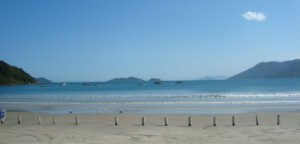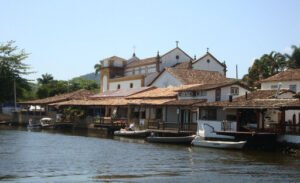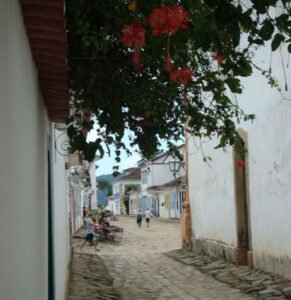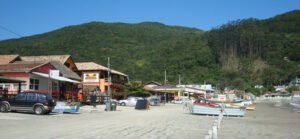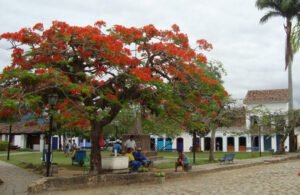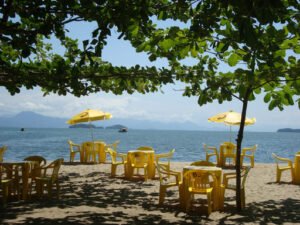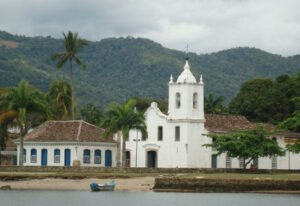Two Backpacks
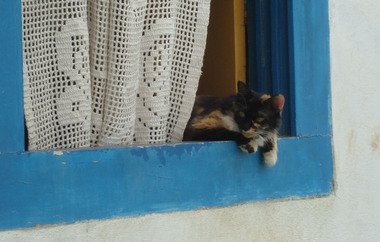
Chapter 32 - Paraty
‘I wish all our onward journeys were as easy,’ I comment as Ron and I pull our backpacks from the hold of the bus.
We’re back in Paraty, the return trip from Trindade much quicker for being virtually downhill most of the way.
We’ve booked a room at Villaggio, a two-minute walk from the bus station. Our posada, tucked down a lane covered in bougainvillaea of reds, purples and oranges, is a quiet hideaway for the five days we’re in town.
When our hostess shows us our room, I can’t stop smiling. There’s a huge double bed with adorable soft furnishings and windows giving views of the property’s gardens.
Still suffering from the time difference between Europe and Brazil, my body clock finds adjusting to the Brazilian way of life hard.
That’s fine, but it also means that when I’m hungry in the early evening, most restaurants and bars haven’t yet opened for the night trade. By the time they do open, I’m ready for bed! I sleep, wondering what fun I’m missing and thinking I should be out on the town.
By the time we’ve unpacked, it’s siesta time in Paraty; all the local shops have shut. But neither Ron nor I are tired, so we decide to explore.
Paraty was originally populated by the Guajanas Indians who gave it its name, meaning River of Fish. The Portuguese settled the town in 1597. Gold, discovered by the Portuguese in the state of Minas Gerais some 500 miles south, was shipped back to Portugal through the seaport at Paraty.
While Paraty snoozes, we wander the narrow lanes and the cobbled streets. Walking is precarious but adds to the uniqueness of this quaint town. Brightly coloured bougainvillaea cling to property walls and terraces, their heavily laden branches providing a canopy of shade over the streets.
Our progress is slow, especially in the heat of the day. Neither of us wants a broken or twisted ankle. It doesn’t take long for us to work out the smoothest stones run along the middle of the road.
Old houses and churches crowd each other for a place on the cobbled streets; the picture is captivating with their whitewashed walls and brightly painted doors and windows.
It’s high tide when we reach the seashore. Sea water has flooded some of the tiny, cobbled streets, turning them into small streams, an occurrence that happens regularly at the time of a full moon.
We detour the flooded area and find our way back to the shore. Nearby is the much-photographed whitewashed church, built in 1722 and used by freed slaves and freemen (former slaves).
We find a bench under the shade of a banyan tree and watch as the tourist boats return from their trips to the many islands that lay off the town. It’s so peaceful; no one hassles us as we sit and watch. Locals give us a nod of recognition and the occasional smile as if we’re part of life there.
We wait for sunset but are disappointed as clouds build, heralding an approaching storm. We’ll try again tomorrow.
Our five days in Paraty are lazy: a few hours on the beach, a wander along the shoreline or river, a siesta (yes, my body clock is gradually becoming tuned to Brazilian customs), and then supper and a few beers before retiring for the night.
Rested and ready to face bus travel again, we’ve decided not to stay in Sao Paolo but to push on to Curitiba on the next leg of our South American adventure.
